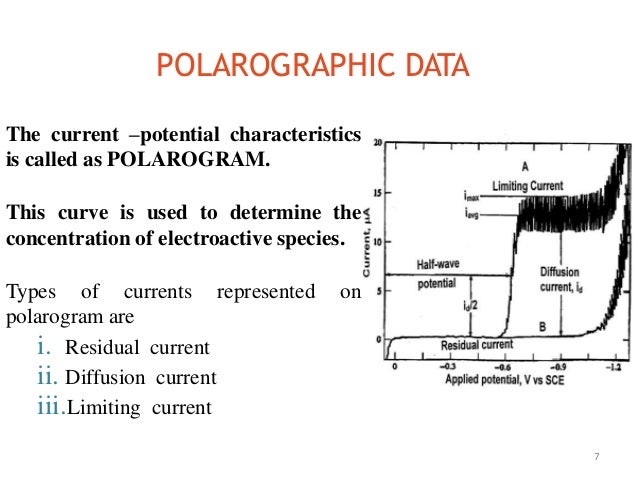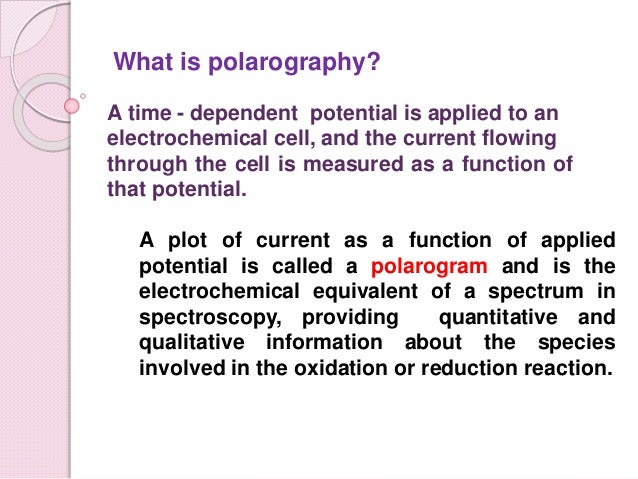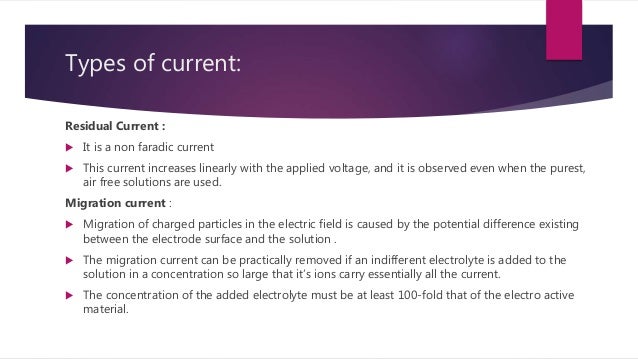Types Of Current In Polarography

15factors affecting diffusion current concentration.
Types of current in polarography. The shape of a polarogram depends on the method of analysis selected the type of indicator electrode used and the potential ramp that is applied. Diffusion current also varies with respect to temperature directly proportional. Introduction polarography is an electroanalytical technique that measures the current flowing between two electrodes in the solution in the presence of gradually increasing applied voltage to determine the concentration of solute and its nature respectively. The reason for this can be understood by noting that the equations for the limiting current in dc and np polarography eqs 1 and 2 do not contain assumptions about nernstian processes.
It is a type of voltammetry. Polarography polarographic analysis is a method of analysis based on the measurement of current electrolysis of an electroactive species at a given electrode potential under controlled conditions. It is the branch of voltammetry where the working electrode is a dropping mercury electrode dme or a static mercury drop electrode smde which are useful for their wide cathodic ranges and. The sensitivity and the detection limit of dpp are better for nernstian processes while for dc and np polarography they are independent of the type of the processes.
It was invented in 1922 by czech chemist jaroslav heyrovský for which he won the nobel prize in 1959. Diffusion current is directly proportional to the concentration of the electroreducible ions. The figure shows five selected methods of. Viscosity of the medium.
Diffusion coefficient depends on the viscosity of the medium. In general polarography is a technique in which the electric potential or voltage is varied in a regular manner between two sets of electrodes indicator and reference while the current is monitored.

















